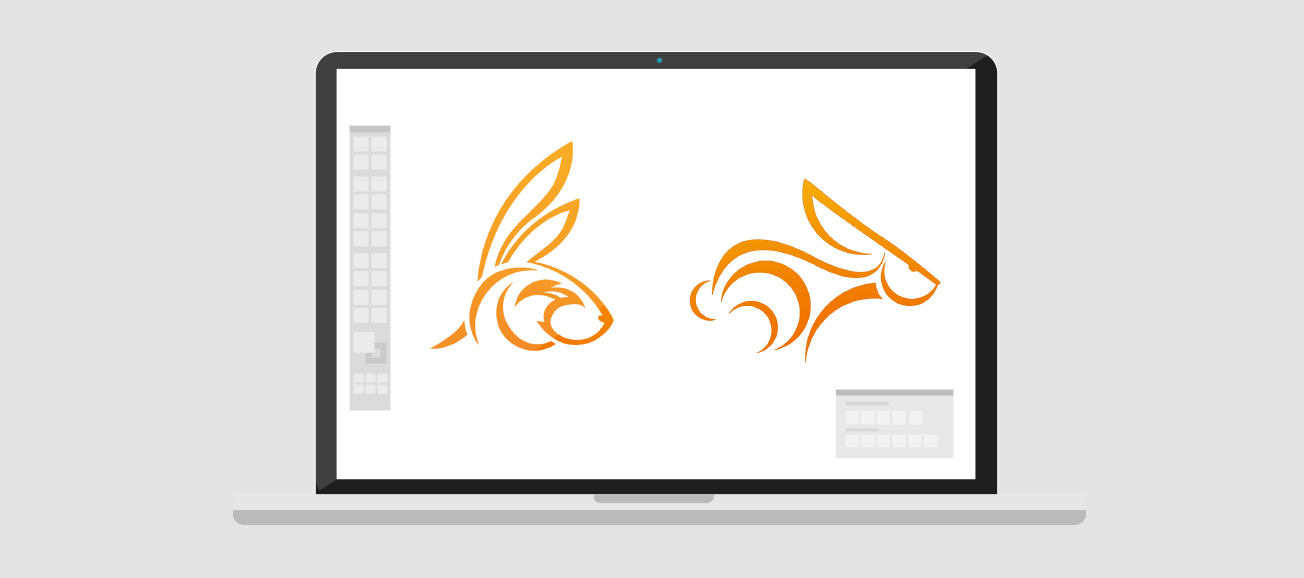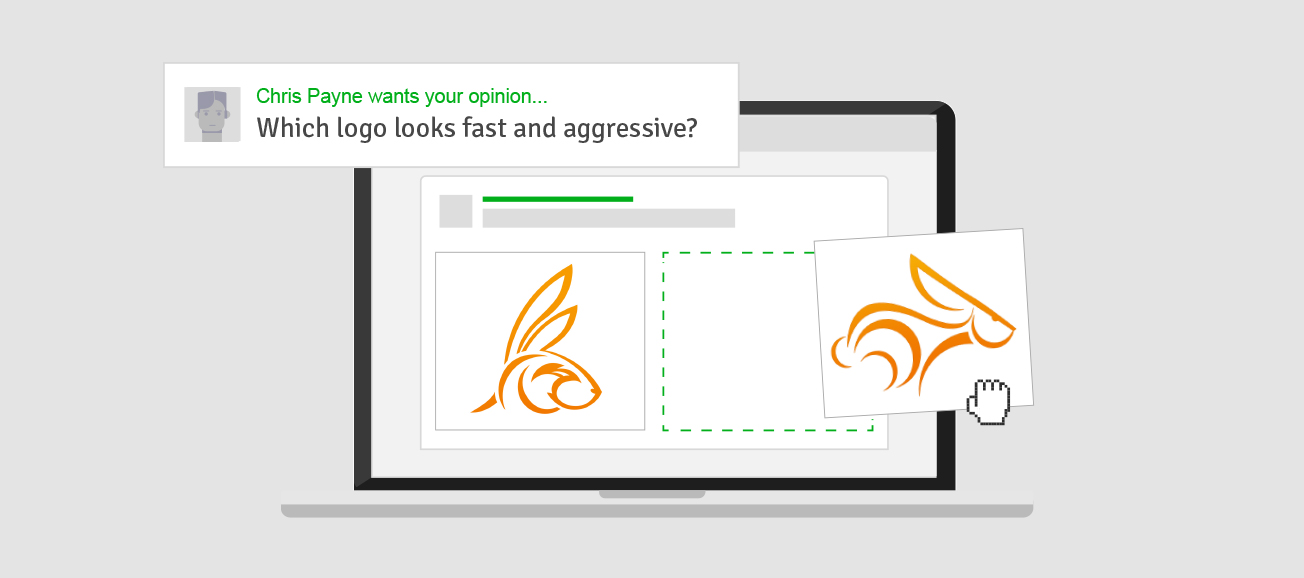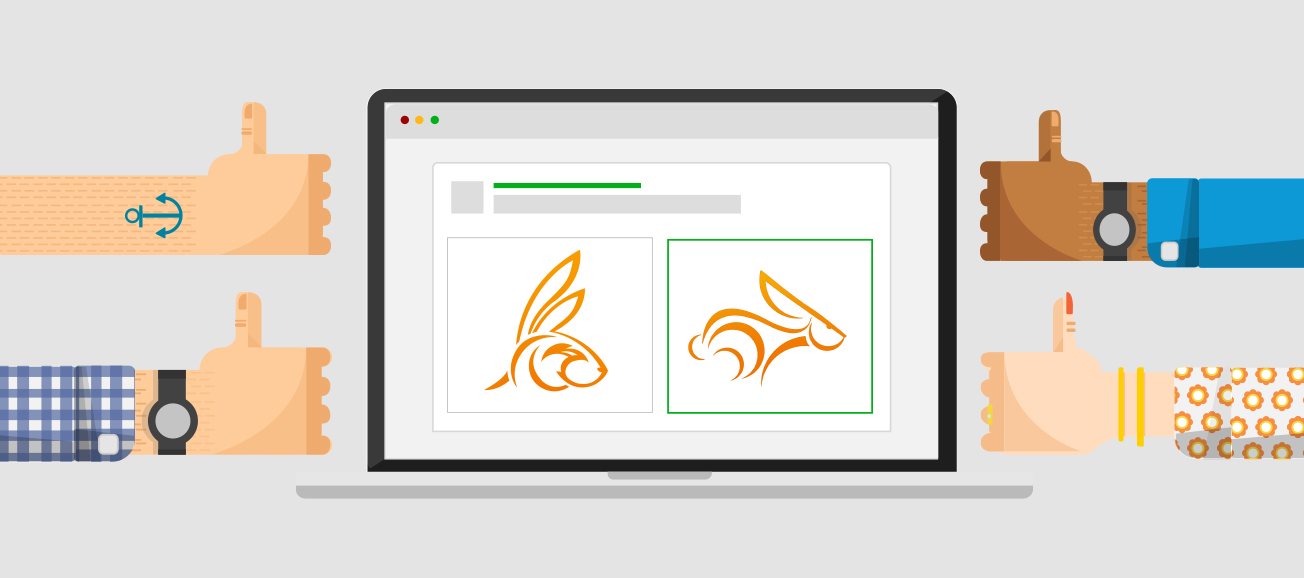Most designers, be it freelance designers working from home, or designers who are part of a large agency design team will be well-versed in the design process. It is a path that is fundamental in creating something. Over recent years the design process has been advanced by a multitude of new applications, websites and other services that aid the process. From the initial question-filled project brief meeting – where designers and art directors review the creative brief with the client – to the end product presentation, the design process (although varying in time and scale) should always follow a common structure. Today we’ll talk about that process and offer you tips on how to make it easier, while also explaining why Desinion is a significant advantage in the process.
Kick off meeting and creative brief
In the kick-off, or initial project brief meeting it is important to ask as many relevant questions as possible. You must leave that meeting with a clear idea of what the client expects from you, what the product is that your designs will represent, and who the target audience is. Clients won’t mind you asking lots of questions, as chances are, good clients have already asked themselves these questions a thousand times before, and if not, they will appreciate the opportunity to get a much better understanding of their own business.
You are not designing for your client, you are designing for your client’s clients – So finding out everything you can about the target audience should never be underestimated”.
It is always advised to probe your clients on the product’s target audience. This is actually who you are designing for. You are not designing for your client, you are designing for your client’s clients, and therefore finding out everything you can about the target audience should never be underestimated. You should find out if the target audience is male or female, their age group, what they do for a living, what kind if income group they fall into, their interests, how they spend their working week / weekends, what their tastes and dislikes are, as well as their life goals and aspirations. You should ask as many questions as possible about the target audience until you know them inside out – this way everything that you design can be related to their ideals.
Research and inspiration
This part of the process is pretty exciting as it gets you excited about the prospect of designing something great! Before a pixel is in place you must carry out comprehensive research. This could include: all aspects of the product, rival products and similar products that are currently on the market and the experience that the product offers to the consumer. You must analyse what the best in the market has to offer, and then work out how you could take the product that you are designing for to the next level, giving your client and their product the a unique edge on the competition.
Once you know the product, its uses and its target audience inside out, you can then start to put together visual mood boards and start sketching your initial ideas. As well as using a sketch book to quickly get a few ideas down on paper, it is becoming common for designers these days to create mood boards on Pintrest or Evernote. They do this by collecting samples of designs that they like to create an overall design ‘mood’ of what they could create for their client. Designers must never steal ideas, they only use these design samples as inspiration and reference, in preparation for when they are ready to put pen to paper or mouse to artboard.
Initial concepts.
This is where the fun really kicks in. Having learnt all about the product that you are designing for and its target audience, here’s the point where you unleash your creativity and new-found knowledge for this product and do what you do best – design!
You should design a few initial design concepts, always referring back to the brief and its key words. You should design your concepts with the target audience always at the forefront of your mind, thinking about how the target audience would react and use the product and how they would associate themselves with the design.
You should design a few initial design concepts, always referring back to the brief and its key words. You should design your concepts with the target audience always at the forefront of your mind”.
On average, designers usually create two initial designs before presenting their work to others for feedback. Each concept should be experimented sufficiently with certain colour schemes, fonts, font-weights, strokes and so on. They should then be developed again multiple times before and after feedback so that they are in a place where it is looking good. The concepts should be completely different, and only share the qualities that respond to the brief. Remember that as a designer you are always aiming to offer your client as much variety as possible when it comes to the presentation of your ideas.
Feedback
Getting feedback is a massively important part of the design process. As a designer your enthusiasm and excitement about your design concepts can occasionally cloud your judgment, as you see the designs from creation to every little tweak along the way. It is important to regularly check in with others and show them your designs and ask for feedback and opinions. It is important to have people with ‘fresh eyes’ to view your design concepts, as they will be able to tell you which direction is working best for them.
This is where Desinion is your new best friend. Desinion is the place where good designers get straight-to-the-point feedback, statistics and comments on their design concepts. Once you have a few strong design concepts, and you like a few general directions that you have explored, you can simply and quickly create a Design Debate by uploading your design concepts to Desinion. You can ask any question you like about your designs concepts, and gauge what a wide audience and target audience thinks about your design concepts, in real time!
Tip: Many designers that use Desinion upload their designs at the end of their working day. They design all day creating beautiful concepts, and then just before they clock-off, go for a pint, or spend time with their friends and family, they upload their strongest two design concepts to Desinion. So when they start designing the next morning, they’ll have a large number of stats and opinions on their designs, to aid the next stage of development.
Using Desinion for straight-to-the-point feedback
When looking for feedback, Desinion is extremely advantageous. After asking a question about your design concepts and uploading your work, Desinion users offer their opinions according to your question. By creating a design debate showcasing your two strongest concepts, you will not only expose your work to an eager and enthusiastic audience, but you will also be offered straight-to-the-point feedback, opinion and demographical statistics on which one is the strongest. The feedback will be raw, direct and unsweetened, something that you may not get from your friends or colleagues.
Great designers also create different variations of the same concept and then test them against each other, changing only the slightest details, such as font-weight, colour combinations or corner radii. They then upload the alternative designs and gauge what the wider audience thinks or prefers.
Statistics on design
As we touched on earlier, Desinion also makes receiving feedback statistical. You can still receive comments and descriptive opinions through the comments feature, but one of Desinon’s key and most exciting elements, is the ability to give and get statistics on design concepts… in REAL TIME!
In the same way that sports spectators have their opinions on which players are better, the people that really matter and pick the team – the coaches – analyze the player’s statistics to see who performs the best. Desinion operates in a similar fashion, in the same way a top sports coach looks at statistics to find their best players, you can access the statistics of your design concepts, to then analyse how they perform, and present the best performing design to the client.
in the same way a top sports coach looks at statistics to find their best players, you can access the statistics of your design concepts, to then analyse how they perform, and present the best performing design to the client.”.
Desinion takes all the opinions offered by others in the Desinion community and breaks them down into statistics – both overall and by demographic – so you can see which design concept you have created suits which target audience. For example you could see which design concept is preferred by a male audience, or age range or which people from certain professions think about each design concept.
Presentation day
After you have received feedback on your designs, and you have actioned the changes based on the comments, you must then choose which designs you are going to present to the client. The clients will be expecting to see varying design concepts, and for you to explain the journey and reasoning behind the creation of them.
Present your design concepts with enthusiasm and excitement in your voice. You can have a much stronger confidence in your presentation due to having gone through the extensive design – feedback – development – feedback – development [repeat as necessary] process. You can talk about each design concept with passion and reason, while walking your audience through your thought process and reasoning behind the creation of your designs. Keep your explanations very matter of fact and remember to keep referring back to the creative brief and elaborate on why the target audience would have a positive reaction to the designs that you are showing. You will show that you have thought deeply about the design process and that you can back up your work with statistical evidence.
Make sure that there’s lots of enthusiasm and excitement in your voice. Talk about each design concept with passion and walk your audience through your thought process in producing these designs.
If you do all of the above and have great design concepts, execution excellently and that respond to the requirements of the initial creative brief, then you can be confident of a great presentation and happy client.
Turning a good presentation into a great presentation
One way of really turning that good presentation into a great presentation is by showing your client the statistic breakdown of the design which you are presenting. You can do this so easily with Desinion Reports.
Desinion Reports allows you to download and print out conclusive reports on your design concepts. These reports are ‘client ready’, meaning that they are aimed at your client or decision-maker. They detail everything about the design debate: who created it, when it was created, how many opinions where offered, what question was asked, as well as a full breakdown of all the statistics.
Clients and decision-makers love and appreciate Desinion Reports for a number of reasons, the first of which being numbers; client love numbers and metrics to analyze and help them to make their decision. It’s hard to argue with statistics. Desinion Reports also show initiative (on your part as the designer / creator), they make you, your presentation and your overall design process feel more complete, well thought-out and results orientated.
Desinion Reports also show initiative (on your part as the designer / creator), they make you, your presentation and your overall design process feel more complete, well thought-out and results orientated.
Ending your presentation on a high is key to leaving a lasting impression. End the presentation with the feedback and statistics that you have received on the concepts that you are showing. After you have presented your design concepts and spoke about their merits and how they relate to the target audience, backup your statements with statistics. Explain to your clients that you tested these designs against each other and show them your findings. This gives you as a designer more credibility and authority in what you have been talking about. Refer to the target audience and what the statistics say about their opinions on your concepts.
Going into a presentation scenario with Desinion Reports makes you look professional and it show the clients that you know what you are doing. Handing out printed versions of Desinion Reports as a leave behind also really impresses the clients.
Desinion is free for all to use. Click here to get started
For extra features try Desinion Pro for just $19 dollars year (yes per year!).












Deprecated: Function get_magic_quotes_gpc() is deprecated in /home4/desinion/public_html/blog/wp-includes/formatting.php on line 3964
Deprecated: Function get_magic_quotes_gpc() is deprecated in /home4/desinion/public_html/blog/wp-includes/formatting.php on line 3964
Deprecated: Function get_magic_quotes_gpc() is deprecated in /home4/desinion/public_html/blog/wp-includes/formatting.php on line 3964